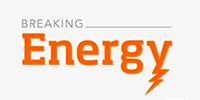 Comments have poured into the Federal Energy Regulatory Commission (FERC) in recent weeks on proposed rules that industry players say would boost energy storage in wholesale markets and open new opportunity for microgrids.
Comments have poured into the Federal Energy Regulatory Commission (FERC) in recent weeks on proposed rules that industry players say would boost energy storage in wholesale markets and open new opportunity for microgrids.
Issued in November, the FERC Notice of Proposed Rulemaking (NOPR) attempts to smooth the way for energy storage to transact in six regional wholesale markets that span much of the U.S. The proposal (RM-16-23) also gives distributed energy aggregators wholesale market inroads.
As is customary, FERC has called on stakeholders to comment on the ideas before it puts them into effect. More than 100 companies, utilities, organizations and state agencies have weighed in.
The interest isn’t surprising. Ted Ko, policy director at Stem, says the proposal has monumental significance.
“It is probably the most significant thing at the federal level ever in terms of the rules changing for our business model,” said Ko. Stem aggregates energy storage so that it can participate in energy markets. The company’s mission is to build and operate a digitally connected energy storage network.
Under the FERC proposal, such aggregations could at last get the chance to compete against the power plants that now dominate the wholesale markets.
“It is finally going to make the different wholesale markets around the country adjust their rules to accommodate what energy storage is capable of doing,” Ko said in a recent interview.
Existing rules were designed long before the rise of energy storage and microgrids. Hence, they accommodate the sale of energy, capacity and ancillary services by large, centralized generators, but not small distributed energy resources (DERs) and energy storage in wholesale markets.
Click Here to Read Full Article
read more
 Australian firm 1414 Degrees, formerly Latent Heat Storage, has developed a molten silicon thermal energy storage system it says can store 500 KWhs of energy in a 70-centimeter cube.
Australian firm 1414 Degrees, formerly Latent Heat Storage, has developed a molten silicon thermal energy storage system it says can store 500 KWhs of energy in a 70-centimeter cube.  Tesla, Inc.’s CEO Elon Musk has made his company’s mission to help the world to transition away from reliance on fossil fuels and toward the embrace of sustainable energy sources. Now a U.K. energy-storage startup called Powervault is now in competition with Tesla, Inc. to outfit homes with affordable backup battery power across the pond.
Tesla, Inc.’s CEO Elon Musk has made his company’s mission to help the world to transition away from reliance on fossil fuels and toward the embrace of sustainable energy sources. Now a U.K. energy-storage startup called Powervault is now in competition with Tesla, Inc. to outfit homes with affordable backup battery power across the pond. Vermont Business Magazine South Burlington-based Dynapower, the global leader in energy storage inverters, and Intertek, a leading provider of quality solutions to industries worldwide, have jointly announced that Dynapower’s
Vermont Business Magazine South Burlington-based Dynapower, the global leader in energy storage inverters, and Intertek, a leading provider of quality solutions to industries worldwide, have jointly announced that Dynapower’s  A research team at Oregon State University is very excited over their new energy storage system, and not just because it is the world’s first hydronium-ion battery. They’re also excited because the new device provides a way forward to the next generation of grid scale stationary batteries that will enable the US grid to accommodate more solar and wind power.
A research team at Oregon State University is very excited over their new energy storage system, and not just because it is the world’s first hydronium-ion battery. They’re also excited because the new device provides a way forward to the next generation of grid scale stationary batteries that will enable the US grid to accommodate more solar and wind power. Parker Hannifin (NYSE: PH), an American energy company, recently announced the completion of the Cochrane energy storage facility, a project undertaken with AES Gener. The partnership with the Chilean energy producer and supplier
Parker Hannifin (NYSE: PH), an American energy company, recently announced the completion of the Cochrane energy storage facility, a project undertaken with AES Gener. The partnership with the Chilean energy producer and supplier  This excellent infographic on global megacities
This excellent infographic on global megacities Energy storage deployments in emerging markets could grow 40% annually over the next five years, from 2GW today to 80GW, but barriers include the lack of access to low-cost capital, a new report from the International Finance Corporation has found.
Energy storage deployments in emerging markets could grow 40% annually over the next five years, from 2GW today to 80GW, but barriers include the lack of access to low-cost capital, a new report from the International Finance Corporation has found.  A US-based coalition featuring companies such as Apple, Microsoft, Amazon and Tesla as members has applauded the efforts of the Federal Energy Regulatory Commission (FERC) to open-up US wholesale electricity markets to energy storage and demand response initiatives.
A US-based coalition featuring companies such as Apple, Microsoft, Amazon and Tesla as members has applauded the efforts of the Federal Energy Regulatory Commission (FERC) to open-up US wholesale electricity markets to energy storage and demand response initiatives.



